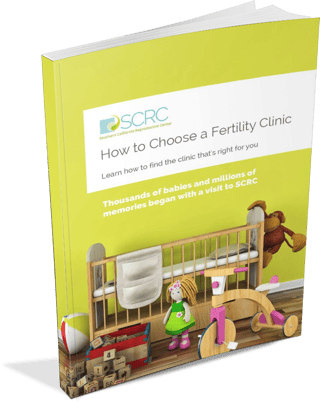I was never very interested in science. I'm still traumatized by the frog we had to dissect in my 11th grade biology class. As an adult, the closest I got to the Periodic Table was when I talked to my dermatologist about chemical peels. But when you are faced with fertility challenges, science becomes your number one subject.
First of all, let's face it—without science there would be about 5 million less people in this world—because that's the estimated number of babies that have been conceived around the world though IVF. The first was in 1978. Back then, the procedure was referred to as a 'test-tube baby' (an antiquated term that conjures up images of Bunsen burners and turkey basters).
Louise Brown was that baby. She's now 37 and just had her second child (and by the way, she did not need IVF to get pregnant). The British doctor and biologist who pioneered the procedure went on to win the Nobel Prize (but I think Louise's mom still walked away as the big winner).
Now, it appears British scientists are on the leading edge of fertility breakthroughs again. This time they've developed a way for three people to make a baby. It's an in-vitro fertilization technique that would combine two parent's genetic material with that of a third female donor.
This is a breakthrough for women who have defective mitochondria—which can lead to brain damage, heart failure and blindness in newborns. The technique uses a modified version of IVF to combine the DNA of the two parents with the healthy mitochondria of a donor woman. It results in babies with 0.1% of their DNA from the second woman… and is a permanent change that would be passed down through the generations.
British parliament is still weighing in on the procedure… but if everything moves ahead, then the first such baby could be born next year. Proponents say this is "good news for progressive medicine.” But critics vow to fight against the technique that they say raises too many ethical questions. (I bet you the same arguments were raised back in 1978 for that “test tube” thing).
It all makes me think about what science has in store for the next generation.
Will researchers find the way to turn back time and reverse the effect of aging on women's eggs? Will egg freezing become as common as say, getting a mammogram?
And while I now try to stay mindful of all of the advances… it can be mind-blowing when you consider all of the possibilities. For instance, Manchester University researchers recently discovered a chemical signal that can predict whether an embryo will be accepted by the womb, which they hope could dramatically improve IVF success rates.1 Meanwhile, an Australian company has created an incubation machine with time-lapse photography, which allows scientists to watch embryos grow in their first crucial few days.2 (Time lapse imaging is a newer technology which was originally introduced by The Embryoscope®, and my friends at The Southern California Reproductive Center are one first in the United States to put it to use).
Which scientifically proves, it doesn't take a PhD to recognize that since 1978… we've come a long way, baby.
2 https://au.news.yahoo.com/nsw/a/25460222/australian-ivf-breakthrough/
Share this on social media:



